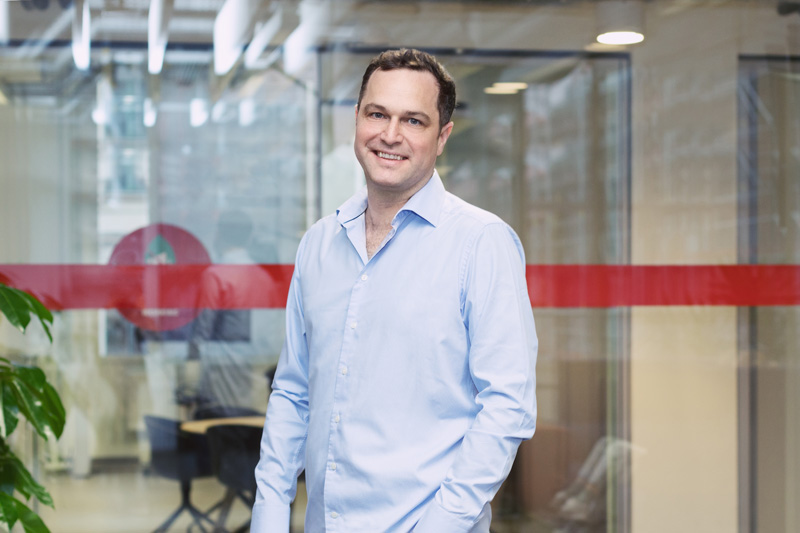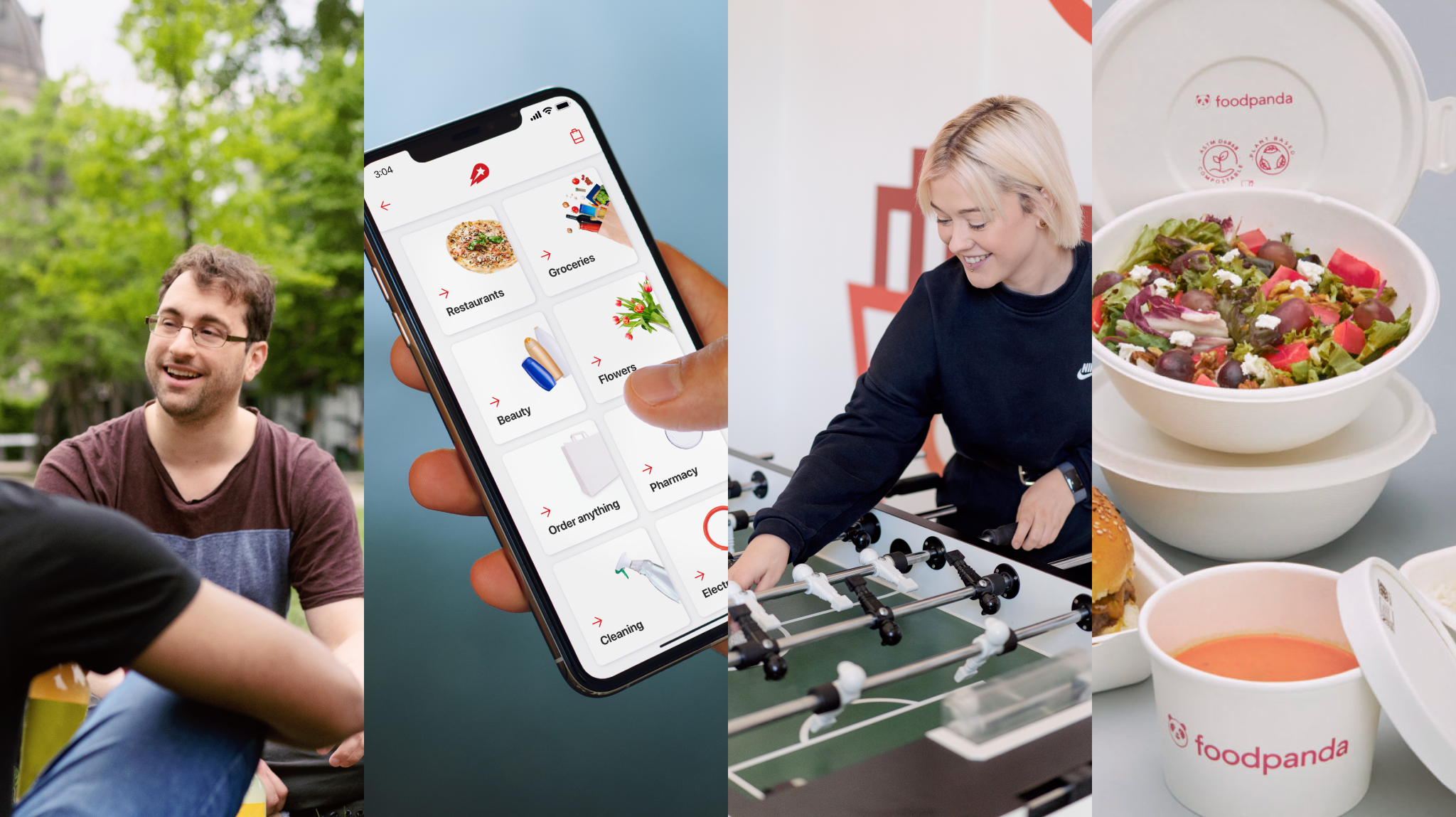Business & Innovation
- August 10, 2020The secret sauce behind brilliant logistics: a story about efficiency, customer satisfaction – and scale
Almost ten years ago, Delivery Hero started off as a marketplace for online food ordering. Today, it is the world’s leading local delivery platform, bringing food, groceries, medical supplies, electronics and other household goods to customers wherever and whenever they need them.
One of many things that make us stand out from the crowd is our logistics concept: Not only do we connect consumers with our partner restaurants and vendors, but in about 62% of all cases we also take care of the delivery ourselves. With rider fleets in more than 600 cities around the world, we can deliver almost anything to our customers – and we can do it faster than anyone else.
So what’s the reason behind operating our own fleets? Is it true that we run our own warehouses too? And, most importantly, how can all of this be profitable? Continue reading to find out the secret sauce behind our best in class logistics.
Setting the foundation: What’s own delivery?
The delivery industry is moving fast, and terminologies are not always common knowledge. Let’s get the foundations in place before we dive deeper into the universe of logistics.
Marketplace
When we talk about marketplace, we refer to our business model as a platform that connects consumers with partners (such as restaurants, grocery stores, flower shops, pharmacies, etc.). Delivery Hero acts as a facilitator: helping customers to get the food or products they want, while the partners take care of all logistics processes.
Own delivery
A few years ago, we started building up our own delivery fleets, to run logistics ourselves and let our partners focus on what they do best (preparing food and providing products). Today, we deliver about 62% of all orders ourselves. We have developed sophisticated technological solutions to organize our fleets efficiently, calculate delivery times, optimize routes, and easily communicate with our customers.
Quick commerce
Delivery Hero started as an expert in delivering meals. Today, we deliver much more: from groceries to electronics, from flowers to pharmaceuticals, we’re committed to making people’s lives easier and get them the items they need in record speed. Quick commerce means that customers can expect their deliveries in under 60 minutes. In some cases, we can deliver already as fast as within 15 minutes. We offer quick commerce in 38 markets already, and we leverage our own delivery fleets to get the job done. Read more about quick commerce here.
Dmarts
To run quick commerce, we partner with more than 20,000 local shops (supermarkets, grocery stores, coffee shops, bakeries, pharmacies, flower stores, and more). Additionally, we operate our own local warehouses (called Dmarts) in densely populated areas. Dmarts are small shops that are optimized for storing and picking products (mostly groceries), and due to their central location, we can offer unbelievably low delivery times. They are not open to the public but serve as a storage place for our quick commerce assortment. At the end of June, Delivery Hero already operated around 150 Dmarts and aims to run 400 by the end of 2020. Read more about Dmarts here.
Why being fast really matters
Q-commerce is what we call the new generation of e-commerce: getting orders to customers’ doorsteps within less than one hour. When we utilize our own infrastructure, we can even be as fast as 10 to 15 minutes.

Why are decreasing delivery times crucial to our business? Pieter-Jan Vandepitte, Chief Operating Officer at Delivery Hero, explains:
“With everything we do, we always have delivering an amazing service in mind. Our offer is targeted at customers who need items immediately – not in a few days, not in a few hours, but right now. It might be someone who urgently needs a phone charger in the office because they forgot theirs at home. It might be a group of people that are about to watch a football game but didn’t have time to buy snacks and drinks. We want to get those people their orders as fast as possible, as we know that they will appreciate it and continue to use our service.”
The equation is simple: Fast delivery + great customer experience + increased customer loyalty = business success. There are however lots of industry experts who still question this model because of the difficulty of making it profitable. To this argument, we have a lot to answer.
How scale can drive profitability
When we started to build our own delivery fleets years ago, we faced a lot of skepticism in the industry; how could logistics ever be profitable? Well, it already is! Irrespective of local labor costs, we already operate our own delivery model profitably* in many of our markets, for example in the Nordics, Argentina or Saudi Arabia.
There are certain peaks when people order food (during meal times), and there are other peaks when people want to shop online (in the afternoon or late evening). Branching out into these new verticals makes our own delivery model even more successful.
“Profitability does not only depend on how much we pay for logistics. It also depends on how much we need to invest into customer experience, how satisfied our customers are, how often they recommend our service to their friends, and so on. By running our own deliveries, we’re in control of the whole customer experience and can communicate easier and more transparently. Data also proves us right: in general, customer satisfaction is higher when we deliver ourselves due to the high level of transparency and reliability”, says Pieter-Jan.
Here’s an example: one of the most common reasons for customers to get in touch with our support teams is wanting to know where their order is. When our partners are in charge of the logistics, all our customer care agents can do is get in touch with the restaurant and ask for the status. Whereas when we deliver ourselves, the customer can check the status straight in their app. While the customer experience improves, costs on our side decrease – it’s a win-win situation.
When a rider drops off an order and immediately receives the next one, the model really works. The rider can earn more money and our fleet is better utilized.
The last ingredient to make own delivery really work is scale. Having one happy customer is great, having millions of them is even better. The more orders they place, the better our rider fleets can be utilized, says Pieter-Jan:
“When a rider drops off an order and immediately receives the next one, the model really works. The rider can earn more money and our fleet is better utilized. By adding new products to our portfolio such as groceries or pharmaceutical products, we can further increase the utilization rate of our fleets. There are certain peaks when people order food (during meal times), and there are other peaks when people want to shop online (in the afternoon or late evening). Branching out into these new verticals makes our own delivery model even more successful.”
Own delivery works best in densely populated areas, but we also manage to operate our fleets in smaller cities. “It’s all about building a strong network with partners, riders, and customers,” Pieter-Jan adds.
From own delivery to owning warehouses
We already know that own delivery can be successful with a strong partner network and the right utilization rate of rider fleets. In 2019, we added another layer to our infrastructure, our own local warehouses, so-called Dmarts.
Pieter-Jan explains the concept of Dmarts: “We pioneered this concept in Turkey in early 2019 and then rolled it out to other countries. We’re now live with circa 150 Dmarts in 11 countries, and we plan to more than double this by the end of this year. We’re confident that by establishing Dmarts, we can enhance the customer experience even further. These stores are close to where people live, so we can deliver in 15 minutes, sometimes even faster. On top of that, Dmarts operate 24/7 and they are optimized for delivery.”
Optimized for delivery – what does that mean? While supermarkets, for example, are built in a way that allows customers to walk with their cart through the aisles, a Dmart is a warehouse that makes storing efficient and picking fast. Rents are usually low because Dmarts are located on byroads or in basements and don’t need an attractive shop window.
With only a few hundred Dmarts in place, we’re still in an early stage and we’re committed to investing further in quick commerce and our own delivery infrastructure. People’s lifestyles are changing, and our customers increasingly value convenience and speed. Our vision is to always deliver an amazing experience, fast, easy, and to your door – and we’re only just getting started.
*referring to profit contribution per order fully loaded





Share